Moray and Maras: A Guide for Exploring Independently


My top tips for Moray and Maras in Sacred Valley:
1. Getting to Moray and Maras: Map and directions
2. Moray and Maras entrance fees 2024/5
3. Fascinating facts about the Moray archaeological site
4. What to expect at Moray Peru: a self-guided tour
5. Visiting Moray on a guided tour
6. What is the Moray Inca site? Here’s how it worked
7. Interesting facts about Maras ancient salt mines
8. What to expect at the Maras salt mines: a self-guided tour
9. What are the Maras salt mines? They get pink salt here!
10. When’s the best time to visit Moray and Maras?
11. Do I have to worry about altitude sickness at Moray and Maras?
12. Where should you stay before and after your visit to Moray and Maras?
Fancy an Inca terrace or two? Then you’ll be happy to know that not far from Cusco city, you can easily visit the Moray archaeological site, known for its mysterious circular terraces, and the ancient salt mines at Maras. An experimental farm (Moray) and a mountain slope full of salt pools (Maras) await you in the Andean region of Peru. Inca terraces for everyone!
The sites of Moray and Maras can easily be visited from Cusco on a half-day tour through the Sacred Valley, or even just as a short stop on your way to Ollantaytambo and ultimately Machu Picchu.
Tip: I don’t recommend going the other way around and seeing the Sacred Valley after Machu Picchu, because after you visit Machu Picchu, everything pales in comparison! Machu Picchu is my #1 on the list of places to visit in Peru.
Still, visiting Moray and Maras is definitely worth a stop since pondering the ingenuity of the Incas never gets old, plus the local community still actively uses these ancient methods of salt production. Also, the views of the snow-capped peaks are not too shabby.
My top tips for Moray and Maras in Sacred Valley:
- It’s straightforward: It’s easy to visit Moray and Maras without a tour if you rent a car or, at the very least, hire a driver for the day.
- Moray and Maras tickets: Moray is part of the Cusco Tourist Ticket that you can buy in Cusco or at the Moray entrance. Maras, on the other hand, isn’t part of any ticket, and you pay at the gate.
- Acclimatize: Use a couple of days in Sacred Valley as a way to get used to the altitude before heading over to higher-altitude places like Rainbow Mountain. Combine Moray and Maras with other Sacred Valley highlights for a full day tour—there’s so much to see!
- Live like an Inca emperor: Sacred Valley has many luxury resorts, so if you want to spoil yourself, now’s your chance! Tambo del Inka, a Luxury Collection Resort & Spa is one place you could consider.
Sometimes, all you need to do is take the first step... I've filtered out the best hotels in Moray and Maras for you
Save it for yourself to come back to later, or share with your friends on social media!
I've already planned your ititnerary for the trip, complete with my travel tips.
1. Getting to Moray and Maras: Map and directions

A map showing the drive from Cusco to the Maras salt pools
If you’ve read any of my other articles, you know I’m a big fan of renting a car wherever I travel. It gives you the kind of freedom that no taxi or tour ever will. The same goes for visiting Moray and Maras. Rent a car and go at your own pace.
The drive from Cusco city to the Maras salt mines (Salineras de Maras) takes about an hour. It’s a distance of 50 km (30 mi). Same for the distance between Cusco and the Moray archaeological site.
Moray and Maras are right next to each other on the map, but driving between them will take you at least 20 minutes thanks to the mountain terrain and the dusty roads you’ll need to take to get from one to the other.
The locals drive like they’re on a highway, so watch out. You, on the other hand, are on vacation, so take in the scenery. It is magnificent!
There are parking lots next to both sites. Easy peasy and free.

2. Moray and Maras entrance fees 2024/5

You can explore Moray with the Cusco Tourist Ticket. Maras requires a separate ticket
When you visit the Cusco and Sacred Valley region, you’ll need to purchase the Cusco Tourist Ticket (Boleto Turistico del Cusco), which includes almost all of the tourist attractions you might want to visit in during your trip to the area.
Cusco Tourist Ticket circuits
There are several options to choose from that each include different combinations of sites in and around Cusco.
The full, 10-day ticket contains all 16 sites in Cusco and the Sacred Valley. It costs PEN 130|USD 35.
The other options are more limited in which places you can visit and are valid for only a day or two.
For our Sacred Valley day trip, you’ll want to choose circuit 3, which includes: Pisac, Ollantaytambo, Chinchero, and Moray. It costs PEN 70|USD 19 and is valid for 2 days.

None of the options include Maras, so you need to buy that on the spot separately for PEN 10|USD 2.75.
Where to buy the Cusco Tourist Ticket
Buy your Cusco Tourist Ticket at any of the sites included on the ticket or in Cusco at the tourist office @ Tourist Galleries, Av. Sol No. 103, or at the Directur Tourist Office on Calle Mantas. Tickets can’t be bought online, and there’s no need to buy them in advance.
Make sure to have your passport with you when buying the ticket and also when visiting the sites. You will be asked to show it, and your ticket includes your name and is non-transferable.
For full details on the circuits of the Cusco Tourist Ticket, see my Sacred Valley guide:

3. Fascinating facts about the Moray archaeological site
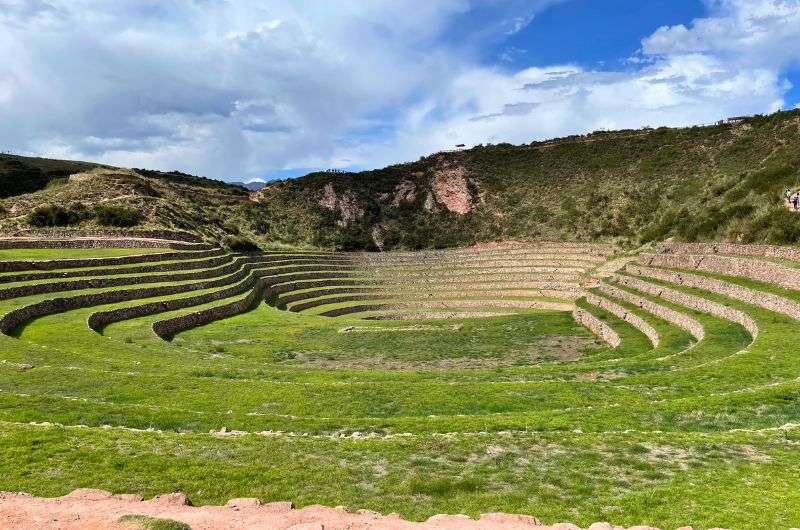
Terraces of Moray—those steps are much higher than it looks in photos! Some of them were as tall as I am!
- Depth of terraces: The largest circular terrace at the Moray archaeological site is 30 m (98 ft) deep, creating distinct microclimates for agricultural experimentation. Some of the “steps” were taller than I!
- Temperature variation: The temperature difference between the top and bottom terraces can be as much as 5°C (9°F), allowing the Incas to simulate different growing conditions for various crops.
- Size: The diameter of the largest inner circle at Moray is 180 m (590 ft).
- Inca agricultural laboratory: Scientists believe Moray was used as an experimental agricultural site where the Incas studied how crops grew in different microclimates.
- Soil diversity: Soil was brought from all over the Inca Empire to create different environmental conditions, showcasing the ingenuity of Inca agricultural science.
4. What to expect at Moray Peru: a self-guided tour
- Moray archeological site on Google Maps
- Open daily 7 am–6 pm
- Price: Part of the Cusco Tourist Ticket (full 10-day ticket: PEN 130|USD 35, 2-day circuit 3: PEN 70|USD 19)
What looks like a giant green amphitheater is actually an Inca archaeological site! The Moray Inca ruins are believed to have been an agricultural laboratory where the Incas experimented with growing different crops in various microclimates. The temperature difference between the top and bottom terraces was 5°C (9°F).
Fun fact: While Moray sits at 3,500 m (11,500 ft) above sea level, Rainbow Mountain laughs at that with its casual 5,200 m (17,000 ft) height. Hopefully, you’ll be able to take it easy in Cusco for a couple of days first, so the only thing that will leave you breathless at Moray are the views, not the altitude.
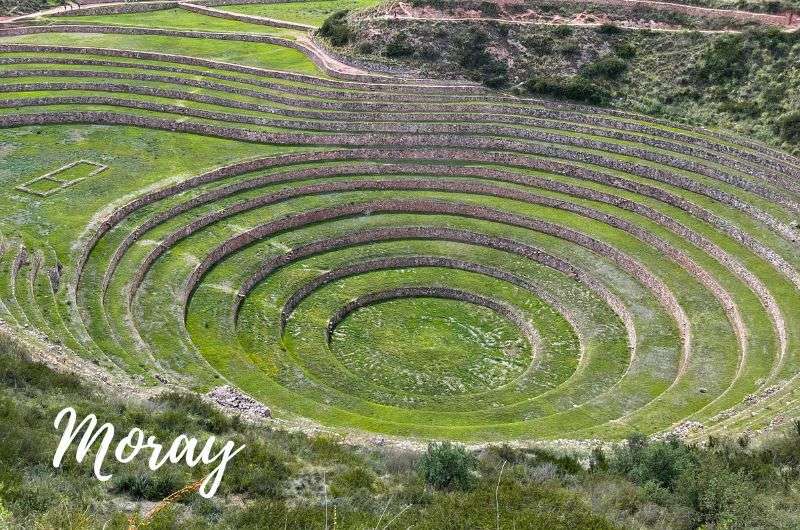
Looks quite alien, don't you think?
There are 3 different terraced, circular, erm, holes at Moray. The diameter of the largest inner circle is 180 m (600 ft). The individual layers are much taller than they look in photos, coming up to my chest. Traversing them isn’t as easy it you might think!
You can walk around on your own at Moray. You can take all your selfies and be done in 30 minutes.
Tip: Visit MIL Food Lab and Interpretation Center located right by the Moray Inca site. It’s basically part high-end restaurant and part culinary lab, so it makes for the perfect present-day addition to your ancient Moray visit.
5. Visiting Moray on a guided tour
The only alternative that I’d consider is taking a private tour—prices start at USD 145. A group tour can be as cheap as USD 20, but I never choose to spend time in a minibus with strangers unless my life depends on it.
Many taxi companies do a sort of tour where they take you to some of the Sacred Valley sites, but provide no guide services. Those costs from USD 70.
6. What is the Moray Inca site? Here’s how it worked
The Incas were researching which plants grow best in which microclimate by creating a round, terraced depression, taking into account the direction of the sun and wind. The difference in temperature between the top and bottom of and soil from different parts of Peru was brought in to mimic different conditions on different levels. Super cool, right?
Through the insight gathered through the experiments at Moray, the Incas of Moray were able to teach other regions how and what to grow in order to have a successful harvest. Being able to feed themselves well certainly contributed to the widespread of the Inca empire.
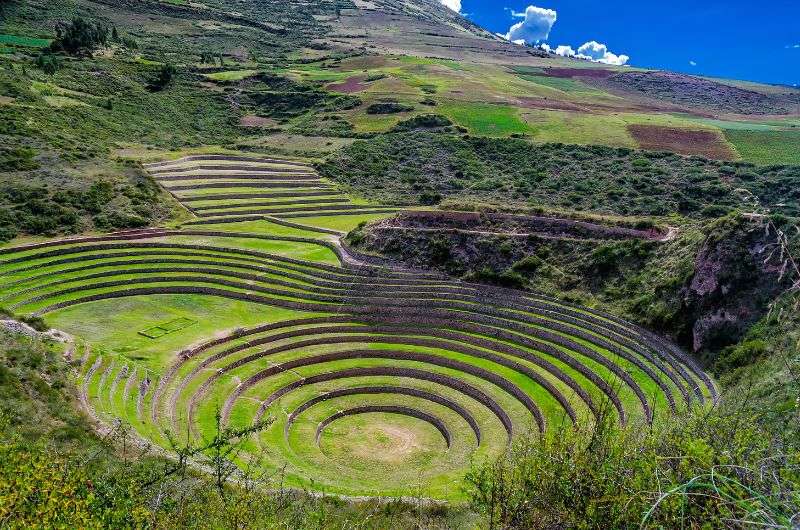
A pretty cool place for experimenting with crops, right?
Everything from potatoes and corn to medicinal plants was grown here. The Incas are to thank for the whopping 2,000 types of potatoes that exist in Peru today!
Of course, there was an irrigation system that fed the terraces with water from the surrounding mountains. The Incas loved their irrigation! And we were smart enough to actually build systems that worked. Respect.
I learned that even the guano (bird poop) from the Ballestas Islands was used on some of the terraces in Moray. It is, after all, the best fertilizer and used to be Peru’s most prized export.
7. Interesting facts about Maras ancient salt mines

Maras is a city of salt mines
- Total number of salt pools: There are over 5,000 salt evaporation ponds at the ancient salt mines of Maras.
- History: The salt pools have been in use since the pre-Inca period, but the Inca Empire further developed the site, and it has been maintained by the local community for centuries.
- Altitude: Maras Salt Mines are located at an altitude of 3,300 m (10,800 ft) above sea level in the Andean region, which contributes to the evaporation process (and your altitude sickness).
- Salt production: The evaporation process allows for the collection of salt layers; the first layer is high-quality table salt, while subsequent layers are of lower quality, and the final one is used industrially.
- Unique feature: It is one of only four places in the world where pink salt is found naturally.
8. What to expect at the Maras salt mines: a self-guided tour
- Salineras de Maras map link
- Open daily 8 am–5 pm
- Price: Entrance fees to Maras cost PEN 10|USD 2.75; Maras is not included in the Cusco Tourist Ticket
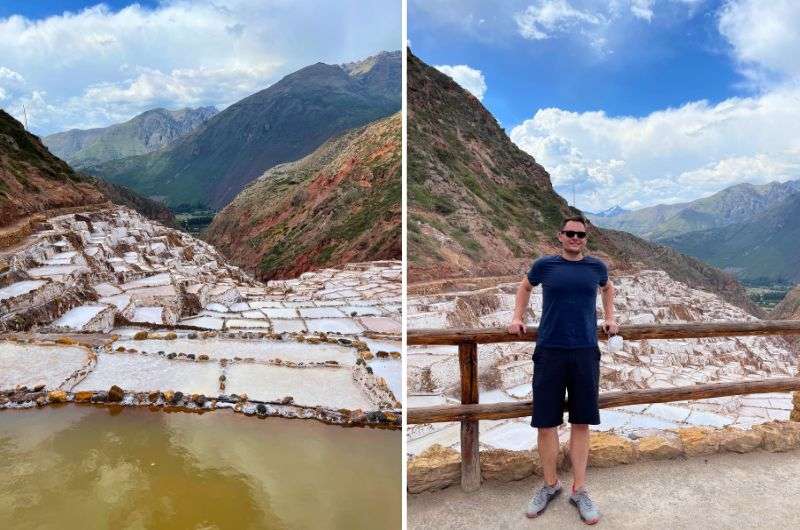
You can’t walk through the salt fields, but even from the walkways, you’ll get mighty good views
Maras is just about the only tourist attraction in the Cusco and Sacred Valley that isn’t included on the Cusco Tourist Ticket, so you’ll need to pay PEN 10 (USD 2.75) once you get there. Have cash on hand.
You aren’t allowed to walk through the salt fields anymore, though I’m more surprised that they ever even permitted it in the first place. I wouldn’t want tourist feet near my salt!
Nowadays, there are viewing platforms and walkways that take you to several different levels, so you still get a good look. Unless you find yourself in the middle of a tour group, you should have plenty of space to yourself.
How long to spend at Maras Salt Mines?
Visitors typically spend about 30 minutes to 1 hour at the Maras Salt Mines (Salineras de Maras). I was done in 20 minutes. It’s all wonderful, but it’s just more of the same after a bit.
The site is relatively small, and since you're not allowed to walk through the salt pools themselves, you'll mainly be observing the views from designated platforms. This time frame allows for plenty of photo opportunities and a chance to explore the surrounding viewpoints.
Additionally, there are small shops near the site selling salt-related souvenirs, so you may want to budget extra time for that. Try the salted chocolate, it was fantastic! Apologies to Aunt Joan, but it was too good to bring back home as a souvenir.
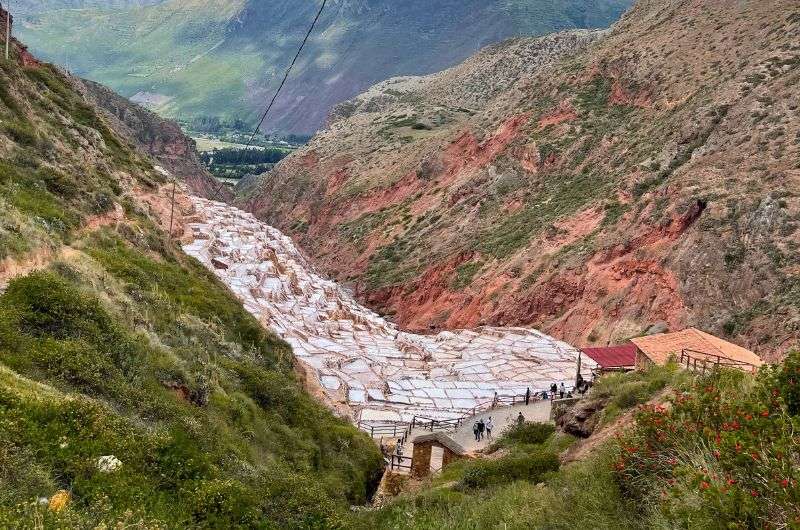
Salineras de Maras
9. What are the Maras salt mines? They get pink salt here!
The salt pools of Maras (Salineras de Maras) were used by the Incas and are still used today for salt production by the local community. It’s a whole side of a mountain filled with thousands of evaporation pools that look like rice terraces, but white. You’ll be surprised by how large the area covered in pools is.
There’s a salty underground stream that runs through the area, and the Incas learned to gather the water and evaporate it on the sunny slopes of the mountain, leaving them with various-sized salt crystals to collect.
In typical Inca fashion, a system of irrigation channels cleverly feeds the individual pools. Once the salt pool has evaporated, it is filled up again a few more times to create more salt layers. That’s when the workers scrape it off.
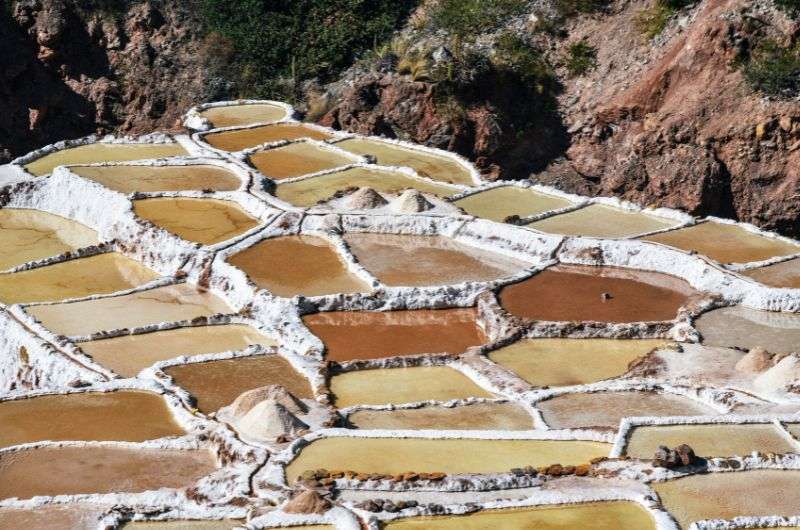
Pink salt comes from the Maras salt mines. If you get the best, top layer, that is
The first layer is high-quality table salt, either white or pink in color. Apparently, it’s only one of 4 places on Earth where pink salt occurs naturally. The next layers are only white and of lesser quality, and the last one is used as industrial salt and comes in shades of brown.
One pool per family
Maras salt pools are kept by the local families, and there is one pool per family based on family size. If a new family comes to Maras, they are given a salt pond to take care of for their personal use. At any given time, there are many empty salt pools just waiting for someone new to claim them.
10. When’s the best time to visit Moray and Maras?
The weather in the region is mild year-round, with daytime temperatures averaging 20°C (68°F). However, the main factor to consider is the rainy season, which occurs between November and March, bringing short afternoon showers.
Wet season and dry season
Wet season is November through March, where you will encounter short showers in the afternoons on most days, but there are days when it’ll come down all day. Then there are days when you get partly cloudy skies and sun, if you’re lucky.
Aim for a visit in the dry season, which is between April and October. That said, there are still instances of rain throughout the year, so always come prepared and don’t let a little water ruin your trip.
Dry season is peak tourist season, so if you’re concerned about crowds, aim for the pleasant shoulder months of April and May or September and October. That said, Moray and Maras aren’t ever going to be extremely packed.
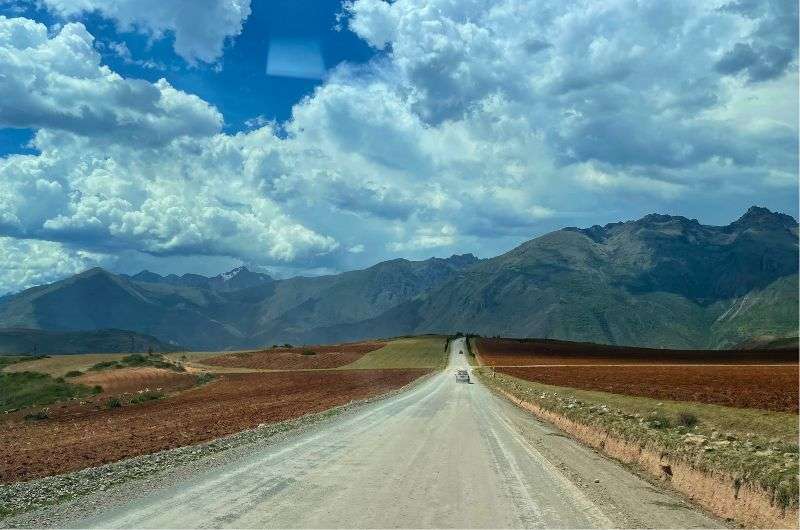
I visited Moray and Maras during the rainy season, and it was still absolutely amazing!
Tip: If you’re also going to Machu Picchu (duh), head on over to our article on the best months and times of day to visit Machu Picchu. Yes, a whole article just on timing a Machu Picchu visit!

Best time of day to visit Moray and Maras
The sites of Moray and Maras aren’t particularly crowded, no matter when you visit, but if you want to be there all by yourself for some reason, go early in the morning. Organized tours generally start leaving Cusco at 8 am, so beat them to it!
For photos, mornings and late afternoons are your best bet if you want the light just right. The Maras salt pools are on the east-facing slopes of the mountain, so take that into consideration when planning those Instagram shots.
11. Do I have to worry about altitude sickness at Moray and Maras?
Yes, it's a possibility, but the risk is lower compared to higher-elevation sites like Rainbow Mountain. Moray and Maras are located in the Sacred Valley at around 3,300 m (10,800 ft) above sea level, which is high enough for some visitors to experience mild symptoms of altitude sickness. If you’ve just arrived in Cusco or haven't acclimatized, you may feel shortness of breath or light-headedness.
Tips to reduce the risk of mountain sickness:
- Acclimate in Cusco city (3,400 m/11,150 ft) for a few days before visiting the Sacred Valley sites. You’ll need plenty of rest to help your body out before setting out on a road trip.
- Drink plenty of water and consider coca tea, which locals often recommend.
- Go slow while exploring the sites and take breaks as needed.
- Don’t eat heavy, fatty foods! I had a huge steak, and that was the stupidest idea ever!
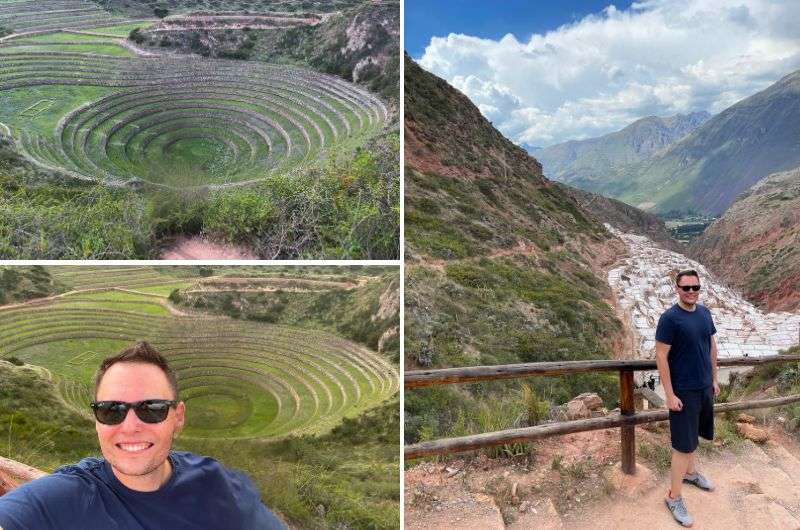
Don't let altitude sickness ruin your trip to Moray and Maras
Generally, after spending a few days in the Andean region, most people feel well enough to visit these sites without major issues!
12. Where should you stay before and after your visit to Moray and Maras?
You will undoubtedly stay in Cusco for at least a couple of nights on your trip. If you aren’t planning on it—big mistake! Cusco is one of the most beautiful cities I’ve ever visited. It is rare that I ever think a city warrants two full days to explore, and Cusco is certainly one of those cities, and then some.

In Cusco, the hands-down top hotel is Hilton Garden Inn. It includes the Garden Grille, which happens to be one of the best restaurants in Cusco. Almost too good to be true, right?
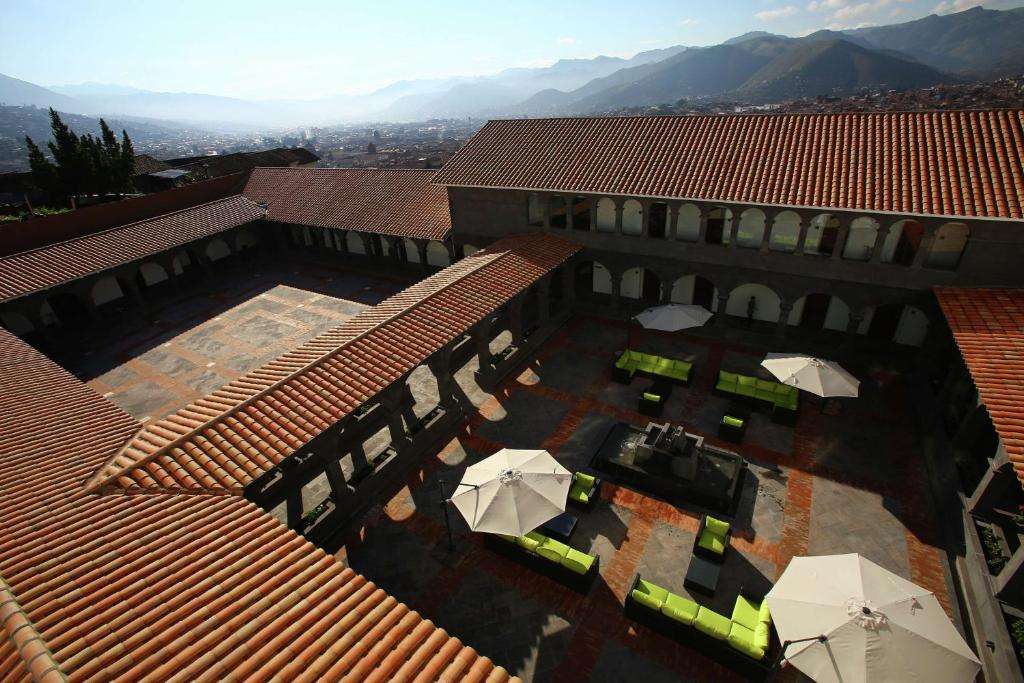
You might be calling Ollantaytambo home for a night, too. The main reason people stay in Ollantaytambo is the train that takes you from there to Machu Picchu, which I assume you’ll also be doing.
Ollantaytambo is also conveniently located directly past Moray and Maras on route to Machu Picchu, so you can elegantly make your way there after your Sacred Valley visit—no detour needed.
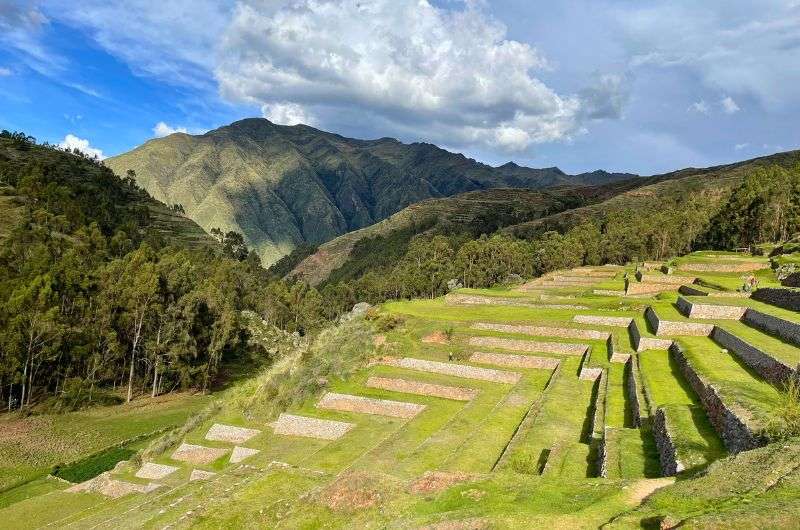
Ollantaytambo is close to Moray and Maras, and it’s worth a visit to more than just the train station!
El Albergue Ollantaytambo is located right next to the train station. The rooms are basic but spacious and very clean, with nice, high ceilings and wooden beams. Not bad for a 3-star! It ain’t a Hilton, but it does the job if you’re just staying a night and want to be close to the trains.
Or, sleep amongst mystical natural surroundings in some of the fabulous luxury hotels of the Sacred Valley. Spoil yourself, you deserve it.
Sometimes, all you need to do is take the first step... I've filtered out the best hotels in Moray and Maras for you
Save it for yourself to come back to later, or share with your friends on social media!
I've already planned your ititnerary for the trip, complete with my travel tips.
You might also be interested in reading:
- A 3-Day Cusco Itinerary
- A 2-Week Peru Itinerary: A Day-By-Day Trip Plan
- The 10 Best Ruins to Visit in Peru
- Top 9 Places to See in Sacred Valley
This post contains affiliate links. I earn a small commission if you make bookings through my links, at no additional cost to you. Thank you for your support!
My top tips for Moray and Maras in Sacred Valley:
1. Getting to Moray and Maras: Map and directions
2. Moray and Maras entrance fees 2024/5
3. Fascinating facts about the Moray archaeological site
4. What to expect at Moray Peru: a self-guided tour
5. Visiting Moray on a guided tour
6. What is the Moray Inca site? Here’s how it worked
7. Interesting facts about Maras ancient salt mines
8. What to expect at the Maras salt mines: a self-guided tour
9. What are the Maras salt mines? They get pink salt here!
10. When’s the best time to visit Moray and Maras?
11. Do I have to worry about altitude sickness at Moray and Maras?
12. Where should you stay before and after your visit to Moray and Maras?





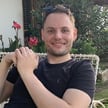
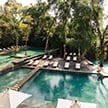





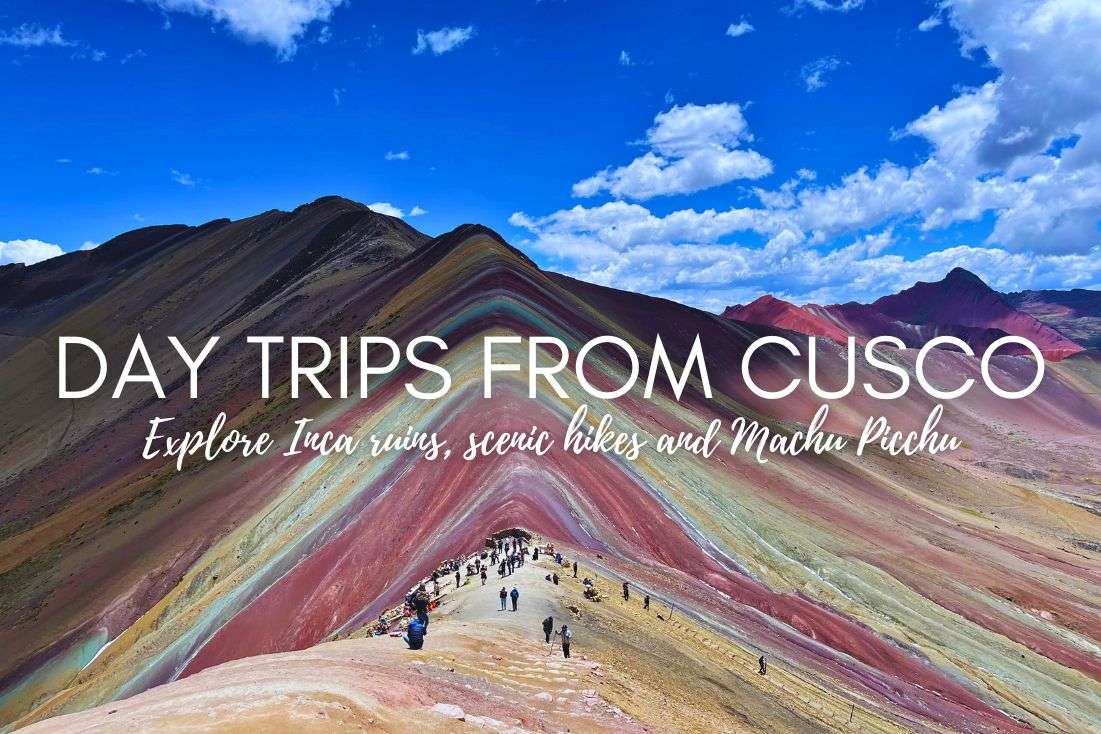



Comments | Thoughts? Give us a shout!